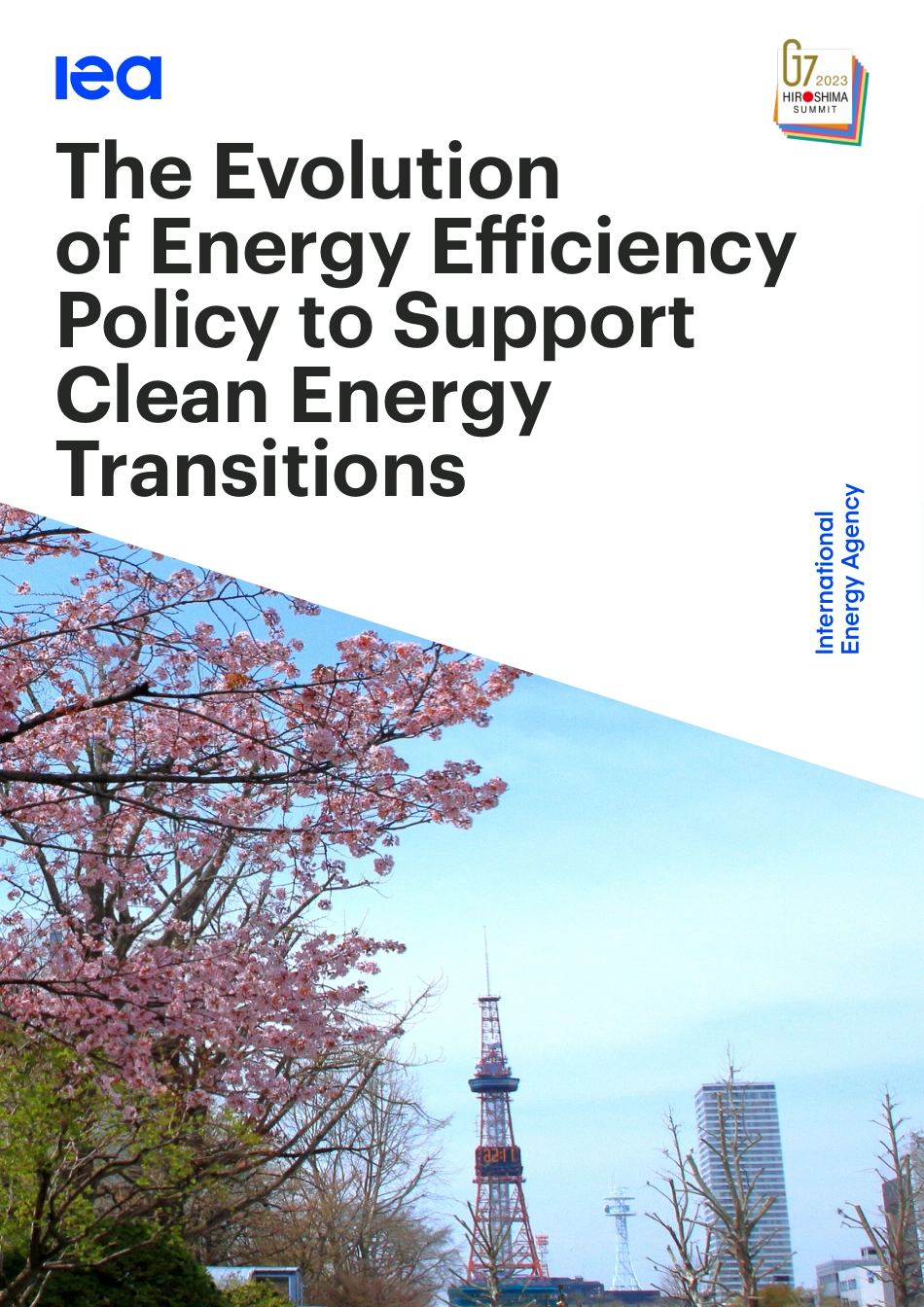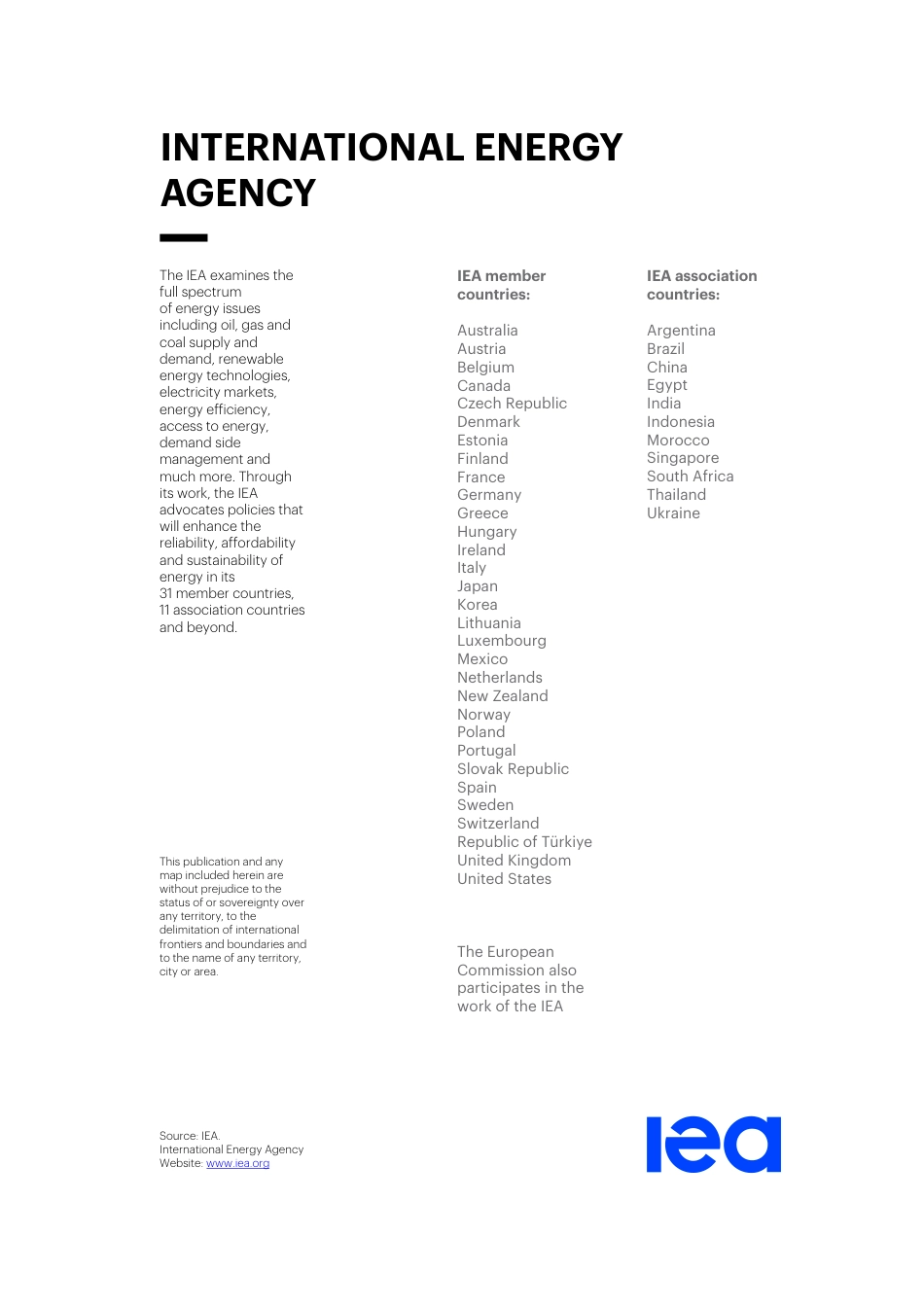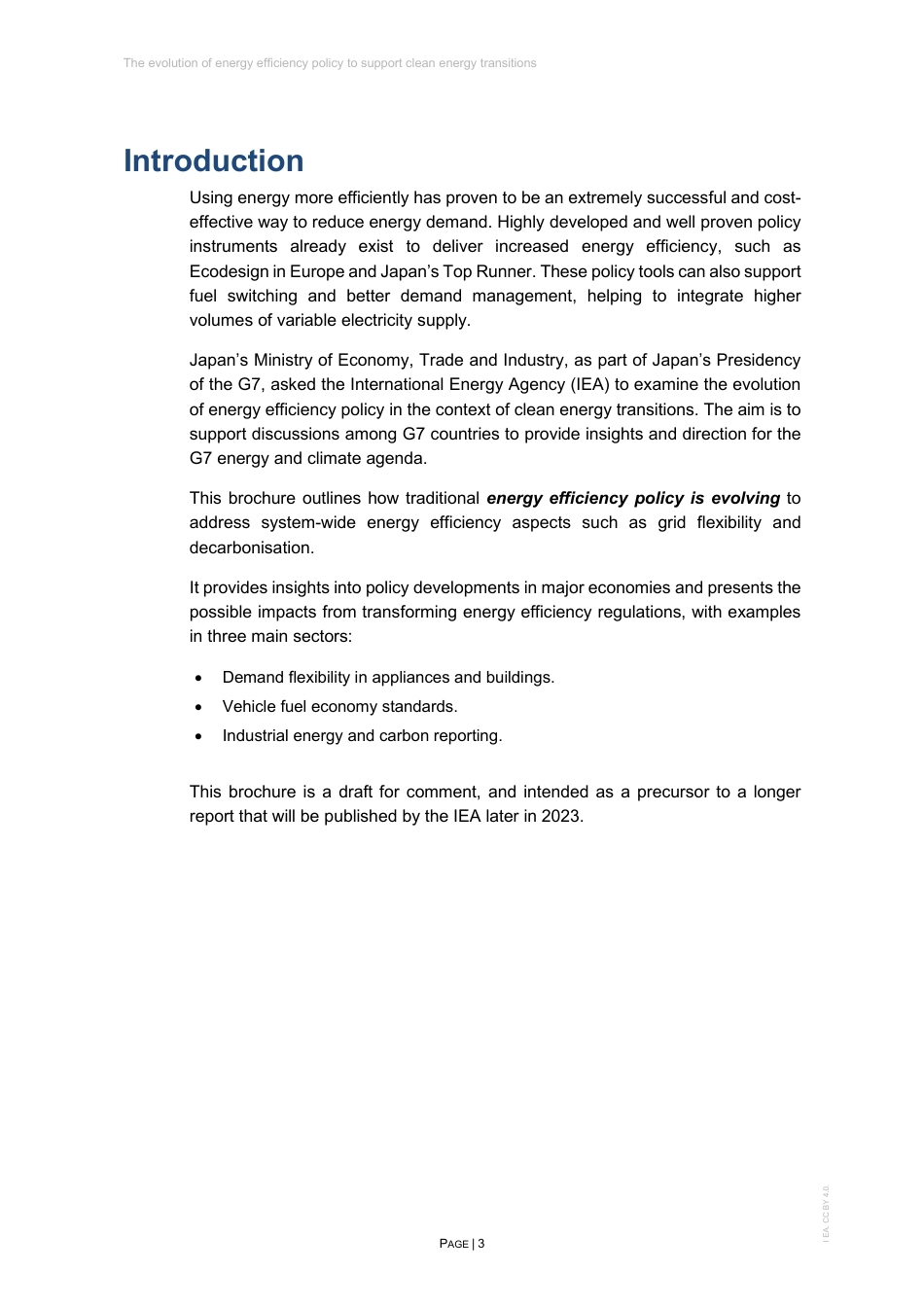The Evolution of Energy Efficiency Policy to Support Clean Energy TransitionsThe IEA examines the full spectrum of energy issues including oil, gas and coal supply and demand, renewable energy technologies, electricity markets, energy efficiency, access to energy, demand side management and much more. Through its work, the IEA advocates policies that will enhance the reliability, affordability and sustainability of energy in its 31 member countries, 11 association countries and beyond.This publication and any map included herein are without prejudice to the status of or sovereignty over any territory, to the delimitation of international frontiers and boundaries and to the name of any territory, city or area.Source: IEA. International Energy Agency Website: www.iea.orgIEA member countries: AustraliaAustriaBelgiumCanadaCzech RepublicDenmarkEstoniaFinlandFranceGermanyGreeceHungaryIrelandItalyJapanKoreaLithuaniaLuxembourgMexicoNetherlandsNew ZealandNorwayPolandPortugalSlovak RepublicSpainSwedenSwitzerlandRepublic of TürkiyeUnited KingdomUnited StatesThe European Commission also participates in the work of the IEAIEA association countries:ArgentinaBrazilChinaEgyptIndiaIndonesiaMoroccoSingaporeSouth AfricaThailandUkraineINTERNATIONAL ENERGYAGENCYThe evolution of energy efficiency policy to support clean energy transitions PAGE | 3 I EA. CC BY 4.0. Introduction Using energy more efficiently has proven to be an extremely successful and cost-effective way to reduce energy demand. Highly developed and well proven policy instruments already exist to deliver increased energy efficiency, such as Ecodesign in Europe and Japan’s Top Runner. These policy tools can also support fuel switching and better demand management, helping to integrate higher volumes of variab...



